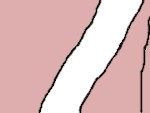|
In affirming disability culture’s resistance of medicalized discourse, Couser (2002) asked, “In collaborative narrative, what issues does collaboration raise in terms of the authority of the narrative and the authenticity of its voice? If an autobiography is collaborative in authorship, whose life is it, anyhow?” (114). Although Couser’s concern, in the above sentence, revolves around opaque joint authorship—where disabled authors use a “transcriber” or perform an “as told to” narrative—he also touches on issues more transparent, issues that surround the climate of the literary marketplace, issues that concern genre and discourse theory. Similarly, in “Materiality and Genre in the Study of Discourse Communities,” Amy Devitt, Anis Bawarshi, and Mary Jo Reiff (2003) have attempted to colorize genre theory, to bring opacity to textual forms and conventions. In forwarding the construction of genre, Bawarshi asserted that generic forms have and give life, that they are breathing entities that shape and reproduce (p. 550). Additionally, the authors emphasized that generic structures are/have been molded by human users, that genre is a “form of life that is a part of other social practices” (p. 551). Thus, a genre must be grounded in its human beginning—no matter how self-sufficient it is currently. In Couser’s and Devitt et al’s senses of genre, I imagine my body is a narrative that straddles two worlds—those of passing and failing at passing—and every rhetorical move that I embody is continually cast and recast into normative and normatively autistic genres. |














